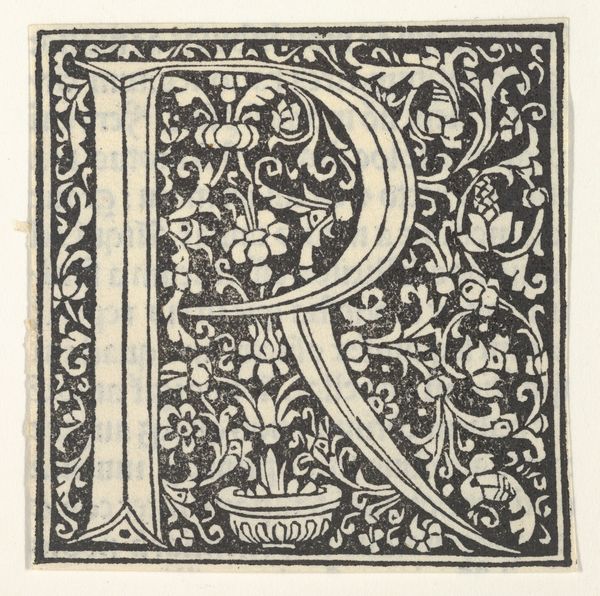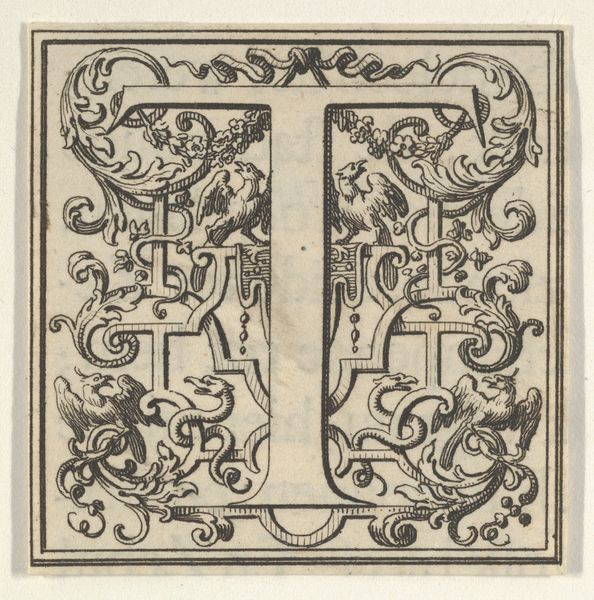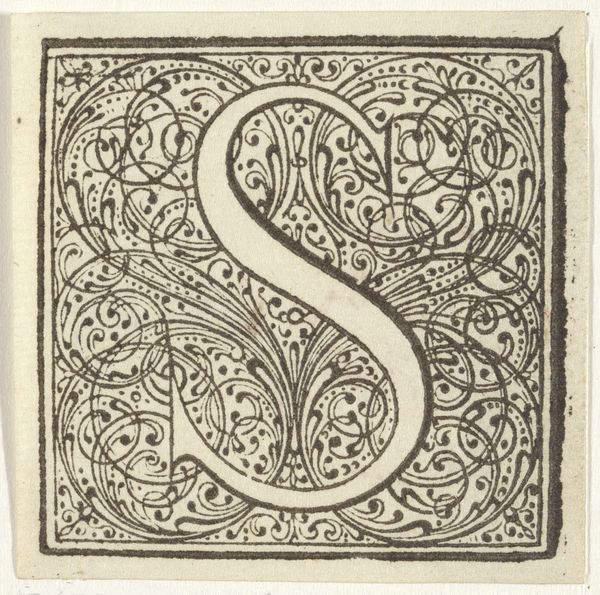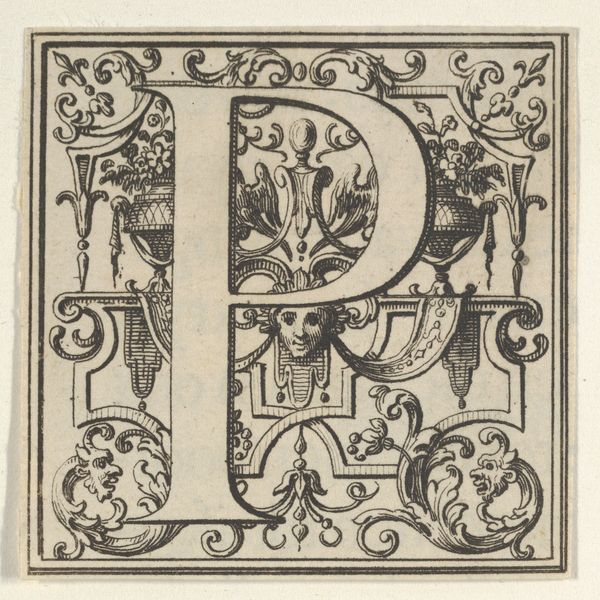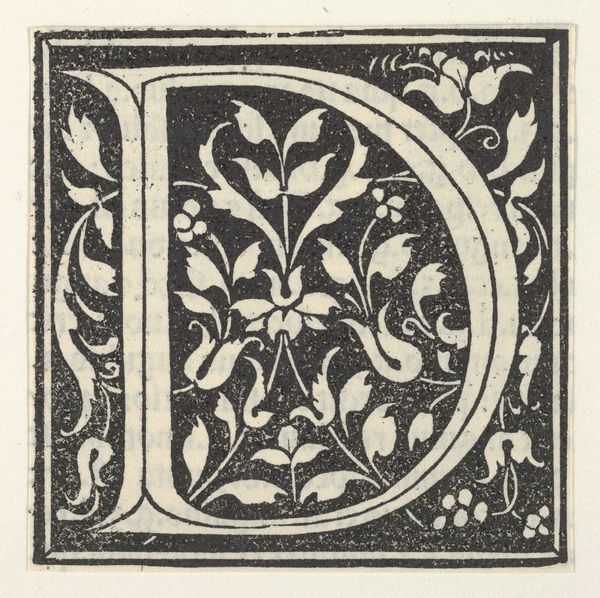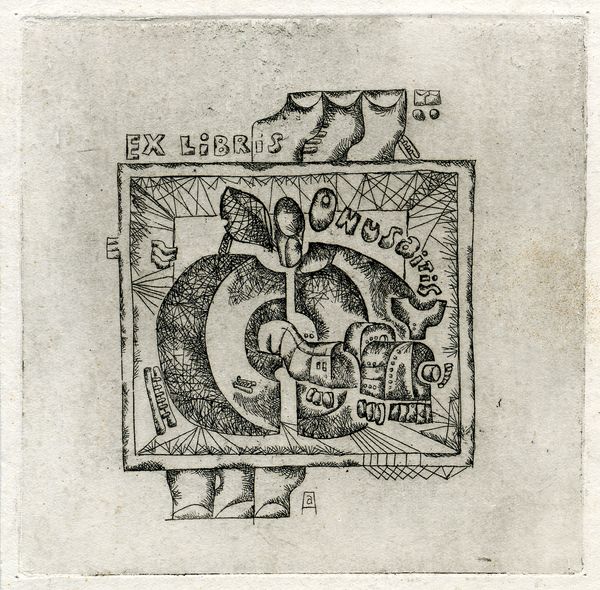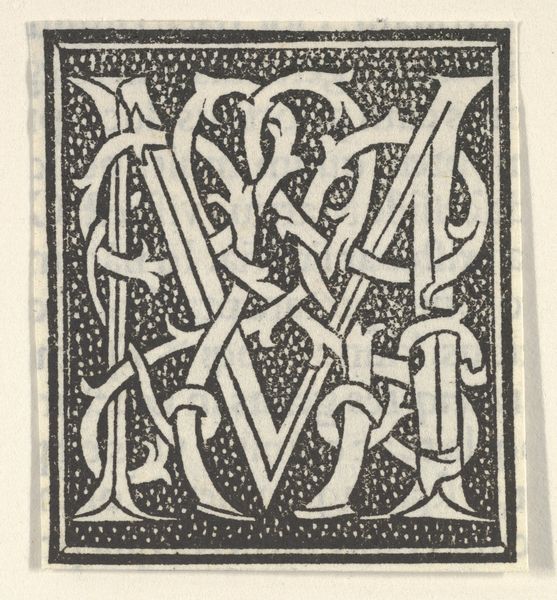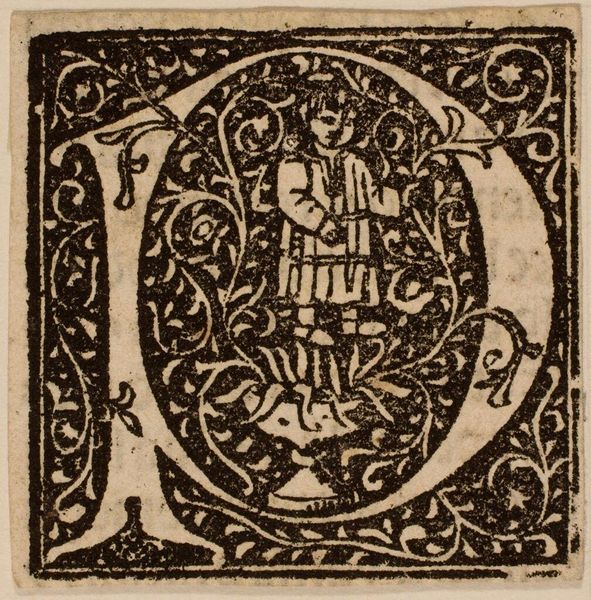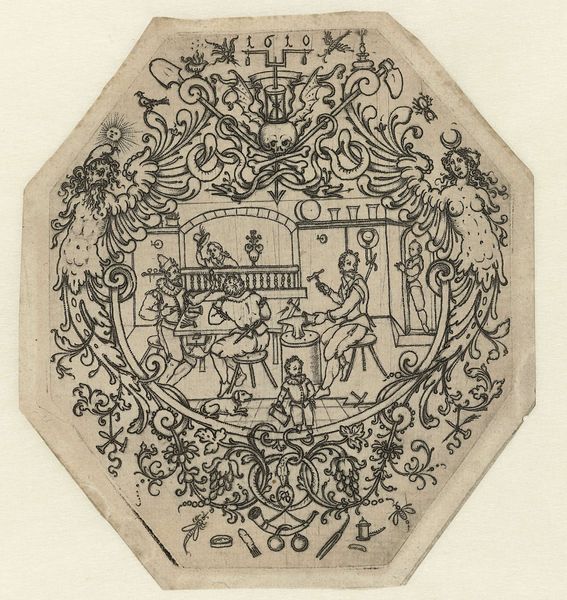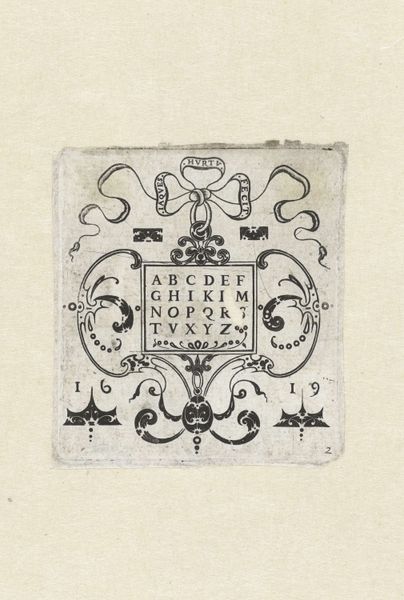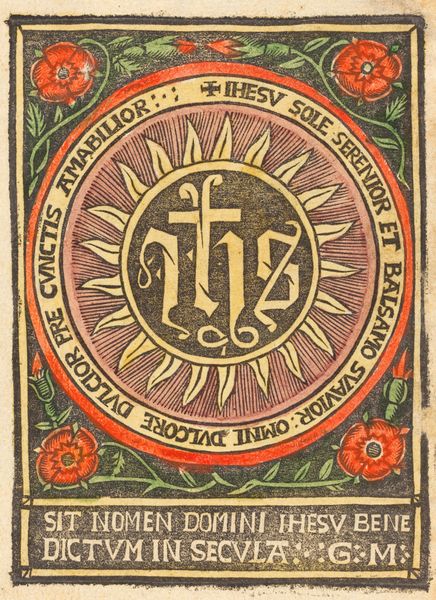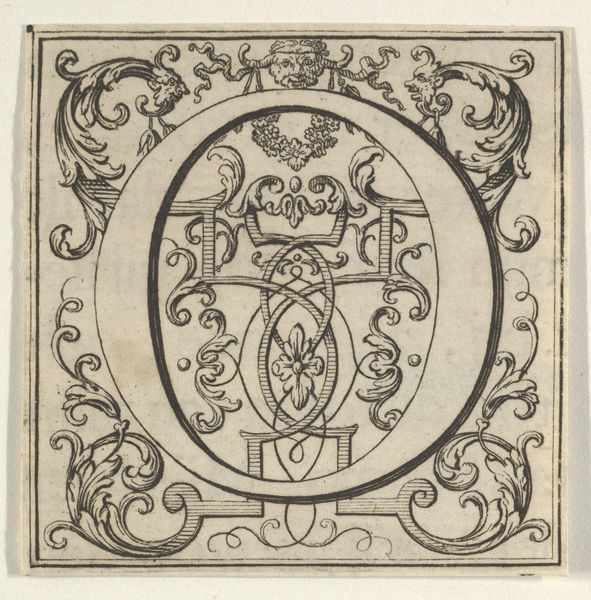
drawing, print, ink, pen, engraving
#
drawing
#
pen drawing
# print
#
pen illustration
#
old engraving style
#
ink line art
#
ink
#
geometric
#
pen
#
northern-renaissance
#
engraving
#
miniature
Dimensions: height 153 mm, width 151 mm
Copyright: Rijks Museum: Open Domain
This intricate monogram, conceived in 1520 by Albrecht Dürer, is a woodcut print, a technique involving carving an image into a block of wood, inking the surface, and pressing it onto paper. Dürer's mastery of the woodcut is evident in the fine lines and textures he achieved. The process required immense skill, precision, and patience. Look closely at the work, and consider how the physical properties of the wood itself – its grain, density, and responsiveness to the cutting tool – would have influenced the appearance of the final print. The pressure needed to transfer the ink, the way the paper absorbs it: these factors all contribute to the image's visual character. It's worth remembering that prints like this were made as devotional images, produced in multiples for wider consumption. Woodcut prints could be produced relatively cheaply, when compared to paintings for example, enabling their distribution into an emerging mass market. This kind of image would have brought spiritual meaning into the lives of many. By considering its material, processes and social context, we understand the full meaning of Dürer's work, challenging traditional distinctions between fine art and craft.
Comments
No comments
Be the first to comment and join the conversation on the ultimate creative platform.

